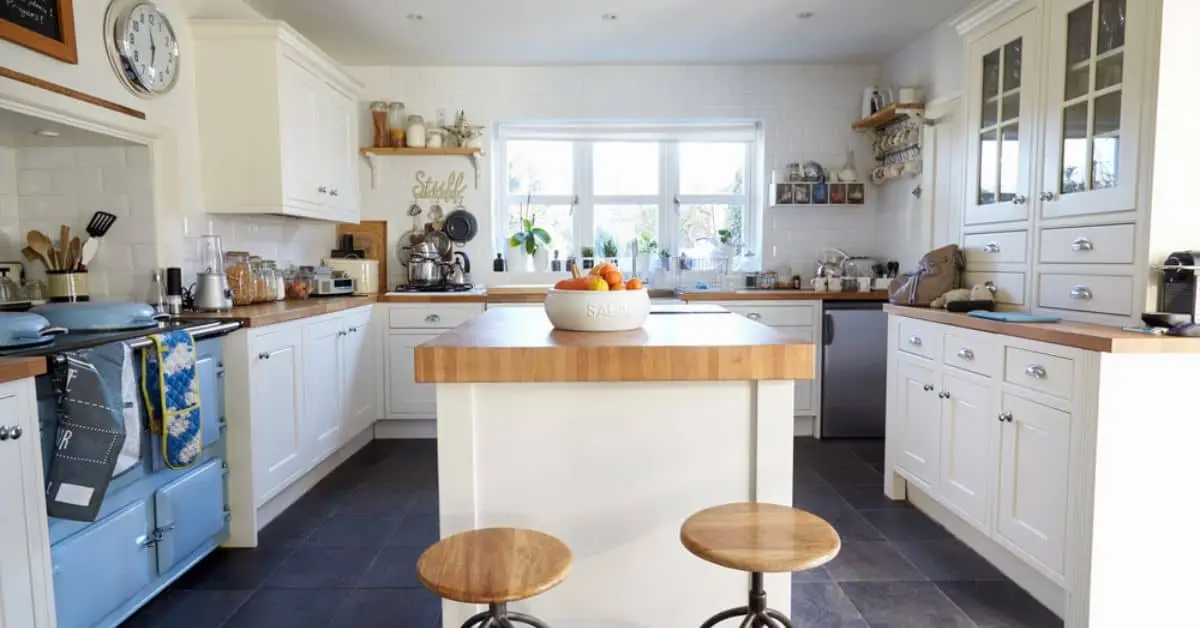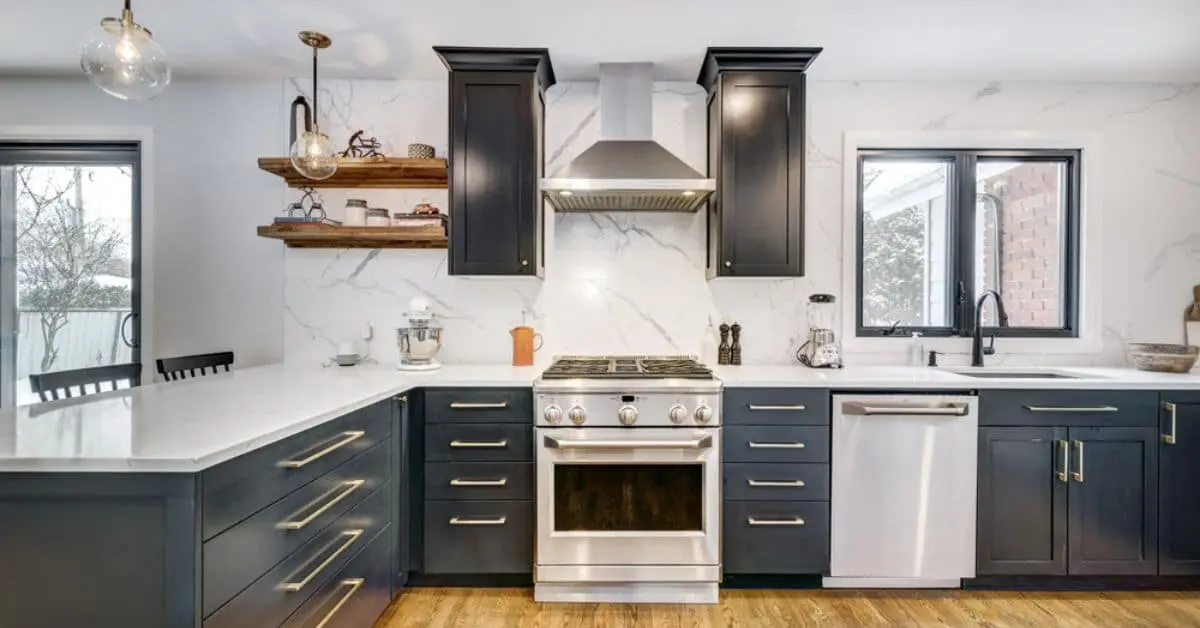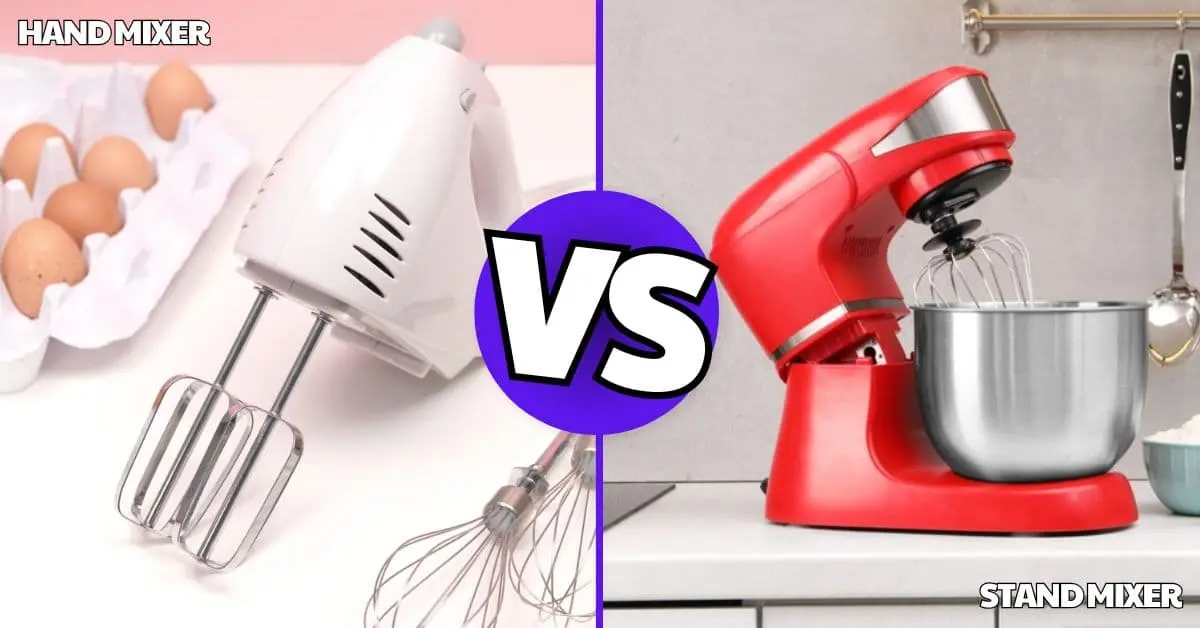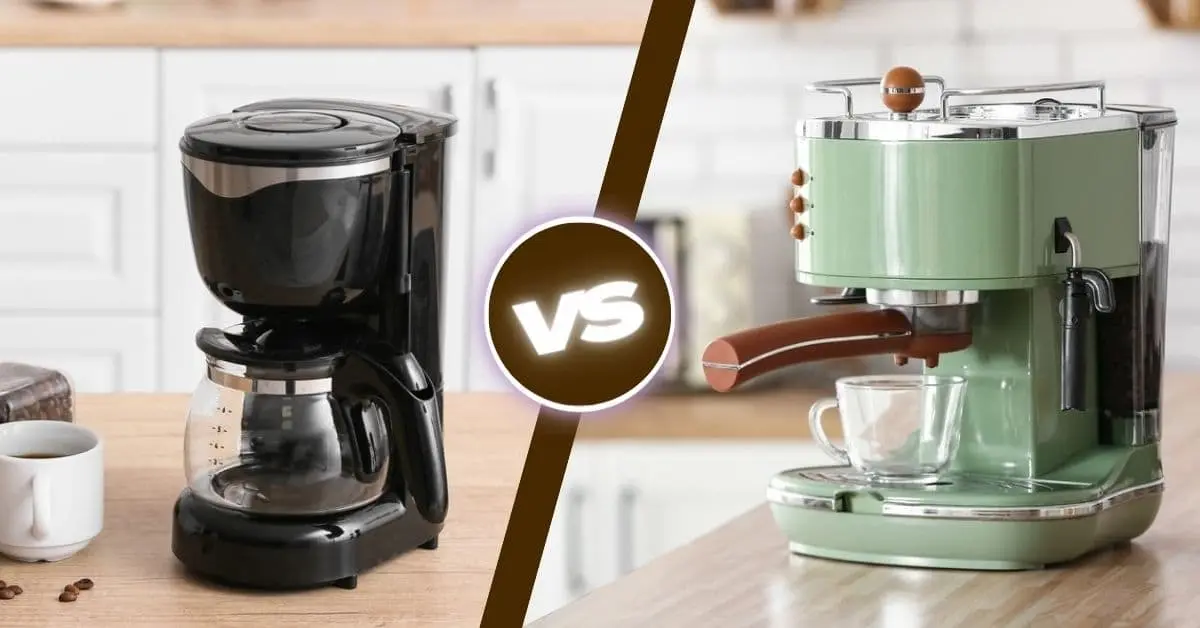If your kitchen feels cluttered and chaotic, chances are your small appliances are part of the problem. From air fryers and blenders to coffee makers and slow cookers, these gadgets make cooking easier—but only if they’re stored properly. When they’re shoved into cabinets, stacked haphazardly, or left collecting dust on the counter, they become more of a hassle than a help.
Good storage isn’t just about making your kitchen look neat. It also protects your appliances from damage, keeps them easy to access, and helps you cook more efficiently. Whether you have a spacious kitchen or a tiny one, the right storage system can make all the difference.
In this guide, I’ll walk you through the best ways to store small kitchen appliances, from decluttering and cleaning to finding the perfect spot for each gadget. You’ll also learn common mistakes to avoid and clever storage solutions that work for every kitchen size. Let’s get started!
Why Proper Storage of Small Kitchen Appliances Matters
Storing your small kitchen appliances the right way isn’t just about tidiness—it’s about making your kitchen work for you. When appliances are organized and easy to access, cooking becomes faster, cleanup is easier, and your gadgets last longer. Here’s why smart storage is essential:
Protects Your Appliances from Damage
Shoving appliances into overcrowded cabinets or leaving them exposed on countertops can lead to scratches, dents, or even internal damage. Proper storage keeps them safe from dust, spills, and accidental drops, ensuring they stay in top condition for years.
Keeps Your Kitchen Organized and Clutter-Free
A cluttered kitchen makes cooking feel stressful. When every appliance has a designated spot, your counters stay clear, and you don’t waste time digging through messy cabinets. An organized kitchen also looks more inviting and functional.
Saves Time and Improves Efficiency
Ever spent five minutes untangling a power cord or moving three other appliances just to reach your blender? When everything is stored logically, you can grab what you need without frustration. Smart storage helps you cook more efficiently and clean up faster.
Prevents Electrical and Safety Hazards
Leaving appliances plugged in or stacking them improperly can pose fire risks or cause electrical damage. Proper storage keeps cords neatly tucked away, prevents overheating, and ensures appliances are stored in a way that won’t cause accidents.
Maximizes Your Kitchen Space
Whether you have a large kitchen or a small one, space is always valuable. Using shelves, storage bins, and appliance garages helps free up counter space while keeping everything within reach. Even the smallest kitchens can feel bigger with the right organization.
When your appliances are stored properly, you’ll spend less time searching for them and more time enjoying your kitchen. Now, let’s dive into how to do it right!
Step-by-Step Guide to Storing Small Kitchen Appliances
If your cabinets are overflowing with small appliances, and you constantly struggle to find what you need, it’s time to get organized. The right storage system doesn’t just make your kitchen look better—it makes cooking easier, prevents damage, and saves space.
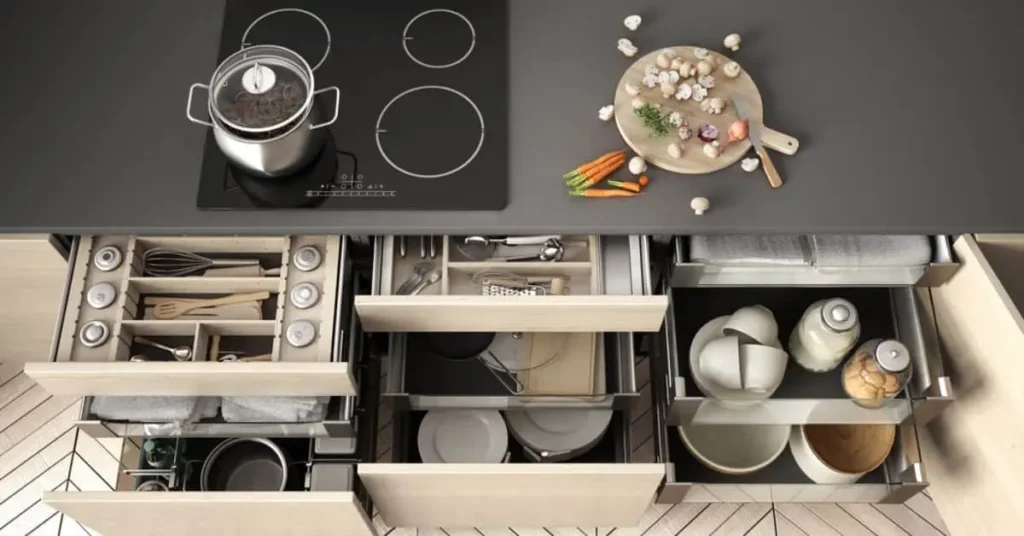
Follow this step-by-step guide to store your small kitchen appliances properly, no matter the size of your kitchen.
Step 1 – Declutter and Assess Your Appliances
Before you start organizing, take stock of your appliances. Chances are, you have gadgets you rarely use, duplicates you don’t need, or broken appliances that have been sitting in a cabinet for months. Decluttering is the first step toward a more organized kitchen.
Pull out all your small appliances and ask yourself a few key questions:
- How often do I use this? If it’s only used once a year, consider storing it somewhere less accessible.
- Is this appliance still in good condition? If it’s broken or missing parts, it’s time to let it go.
- Do I have more than one of these? You probably don’t need two coffee makers or three blenders.
- Is there a more versatile appliance that can replace this? Multi-cookers, food processors, and high-powered blenders can often do the job of several gadgets.
Set aside anything you no longer need and decide whether to donate, sell, or recycle it. Once you’re left with the appliances you actually use, you’ll have a clearer idea of how much storage space you need.
Step 2 – Clean and Maintain Appliances Before Storage
Storing dirty appliances is a recipe for dust, grease buildup, and even mold. Before putting anything away, give each appliance a thorough cleaning.
For blenders, food processors, and coffee makers, wash any detachable parts with warm, soapy water and let them dry completely. Wipe down the exteriors of toasters, air fryers, and slow cookers to remove crumbs and grease. If an appliance has a filter—like a coffee machine—clean or replace it as needed.
Make sure everything is completely dry before storing. Even a little moisture can lead to mold growth, especially if an appliance is stored in a closed cabinet. A quick wipe with a dry microfiber cloth ensures everything is spotless and ready for storage.
Step 3 – Choose the Right Storage Location
Where you store your appliances depends on how often you use them. The goal is to make frequently used items easy to grab while keeping less-used appliances out of the way.
- Everyday appliances like coffee makers, toasters, and blenders should be easily accessible. If you use them daily, keeping them on the countertop is fine. Otherwise, place them on a low, easy-to-reach shelf.
- Occasionally used appliances, such as slow cookers, food processors, and waffle makers, can go in cabinets or pantry shelves. Pull-out shelves or deep drawers work well for these.
- Rarely used or seasonal appliances, like ice cream makers, bread makers, or holiday-themed gadgets, can be stored in higher cabinets, basement storage, or even labeled bins.
If space is tight, consider vertical storage solutions like wall-mounted racks or corner shelves. Stackable storage bins also help maximize cabinet space without creating a cluttered mess.
Step 4 – Use Proper Storage Solutions
A well-organized kitchen isn’t just about finding space—it’s about using that space efficiently. The right storage solutions make a huge difference in keeping appliances accessible while maintaining order.
- Pull-out shelves or sliding drawers allow you to reach appliances stored in deep cabinets without moving everything around.
- Appliance garages—small cabinets designed to hide appliances—keep frequently used gadgets within reach but out of sight.
- Stackable storage bins help separate accessories and attachments, making it easier to find what you need.
- Rolling carts work well for small kitchens, offering portable storage for appliances that don’t fit in cabinets.
- Hooks or wall-mounted storage are perfect for lightweight appliances like hand mixers and immersion blenders.
If an appliance comes with multiple accessories, store them together in labeled bins or bags. Keeping attachments with their respective appliances saves time and frustration.
Step 5 – Store Appliances Safely and Efficiently
How you store your appliances is just as important as where you store them. Poorly stored appliances can become damaged, take up unnecessary space, or create a safety hazard.
For cord management, wrap cords neatly and secure them with Velcro ties or twist ties to prevent tangling. Avoid tightly wrapping cords around appliances, as this can strain the wiring over time. If possible, store appliances with their cords tucked in a way that won’t lead to kinks or damage.
Heavy appliances like stand mixers or air fryers should be placed on lower shelves or countertops to avoid the risk of dropping them. Lightweight appliances, such as electric choppers or hand mixers, can go on higher shelves. If you’re stacking appliances, use protective liners or padding between them to prevent scratches.
For open storage, consider using dust covers for appliances that aren’t used daily. This keeps them clean and ready to use without needing constant wiping.
Recommended For You: How to Arrange Appliances on Kitchen Counter
Best Storage Ideas for Different Types of Small Kitchen Appliances
Not all small kitchen appliances should be stored the same way. A bulky slow cooker doesn’t need to be as accessible as your daily coffee maker, and fragile appliances like blenders with glass jars require more careful handling than a sturdy toaster. The key is to categorize appliances based on function, size, and frequency of use.
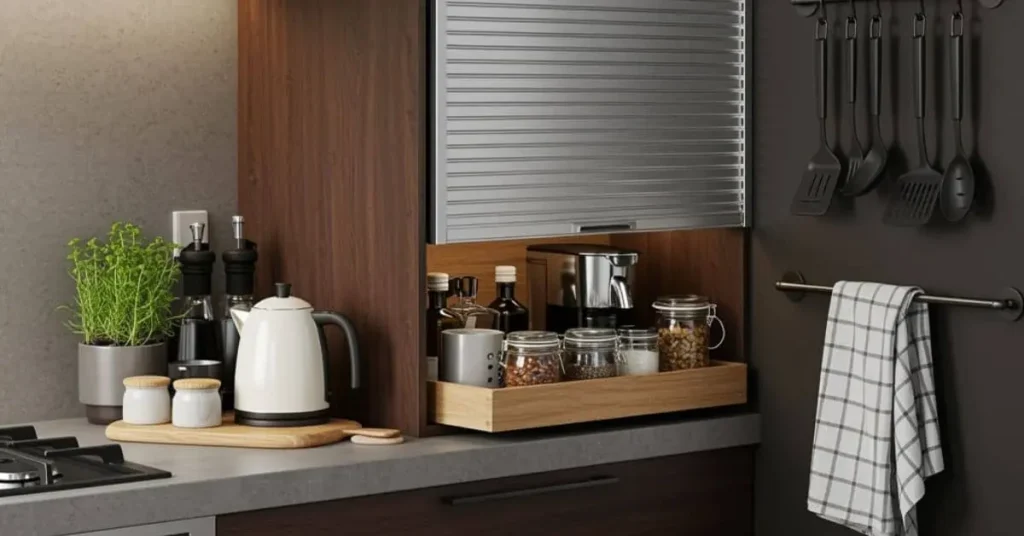
Here’s how to store different types of small kitchen appliances effectively.
Cooking Appliances (Air Fryers, Slow Cookers, Pressure Cookers, etc.)
Cooking appliances tend to be some of the bulkiest in the kitchen. They take up a lot of counter and cabinet space, so finding a proper storage solution is essential.
For items like air fryers, pressure cookers, and slow cookers, deep cabinets or pantry shelves work best. If you use these appliances regularly, a pull-out shelf or rolling cart can make access easier without cluttering your countertops. If counter space allows, consider designating a specific section for your most frequently used cooking appliances, so you don’t have to haul them in and out of storage every time.
If you’re stacking these appliances in a cabinet, place heavier ones like slow cookers at the bottom and lighter ones on top to prevent damage. Keep lids stored separately in a labeled bin to avoid them taking up extra space.
Food Preparation Appliances (Blenders, Mixers, Food Processors, etc.)
Food prep appliances range in size and shape, so smart organization is key. Blenders, hand mixers, and food processors should be stored in a way that makes them easy to grab without knocking over other kitchen items.
If you use these appliances daily, keep them on the countertop or in a dedicated cabinet with pull-out shelves. If they’re used less frequently, a lower cabinet works well. Keep attachments and accessories together in labeled containers or zippered storage bags. This prevents you from losing parts like blender blades, food processor discs, or whisk attachments.
For larger items like stand mixers, storing them on a sturdy lower shelf is ideal. These appliances are heavy, so avoid placing them on high shelves where they could fall. A pull-out drawer or an appliance lift inside a cabinet can make using and storing a stand mixer much easier.
Beverage Appliances (Coffee Makers, Kettles, Juicers, etc.)
Beverage appliances should be stored based on how often you use them. Daily-use appliances, like coffee makers and electric kettles, are best kept on the countertop for convenience. If you prefer a clutter-free counter, consider a dedicated beverage station inside a cabinet or pantry.
For juicers and cold brew coffee makers, which are used less frequently, a deep cabinet or designated shelf in the pantry works well. Store small parts like filters, citrus press attachments, or frothing wands in a small bin nearby to keep everything organized.
If you have multiple beverage appliances, a rolling cart can be a great solution. A coffee bar cart can hold a coffee maker, kettle, mugs, and accessories in one place without taking up too much kitchen space.
Breakfast Appliances (Toasters, Waffle Makers, Sandwich Makers, etc.)
Breakfast appliances tend to be compact, but they can easily pile up and create clutter. Since many of these appliances—like toasters, waffle makers, and sandwich presses—are used frequently, storing them in an accessible cabinet or on a pull-out shelf is a great option.
If counter space is limited, an appliance garage (a small enclosed cabinet on the counter) can help keep these appliances hidden but within reach. Vertical storage dividers inside a cabinet can also help keep flat appliances, like waffle makers and griddles, organized without stacking them on top of one another.
For extra organization, use labeled bins to store smaller accessories like toaster tongs, batter dispensers, or panini press plates. This prevents them from getting lost in drawers or cabinets.
Specialty & Smart Kitchen Appliances (Smart Ovens, Ice Cream Makers, etc.)
Specialty appliances, like ice cream makers, popcorn machines, and bread makers, are often used only occasionally. Because of this, they don’t need to take up prime storage space in your kitchen. Instead, store them in high cabinets, a pantry, or even a basement storage area if you have one.
For smart kitchen appliances that require charging, like smart coffee makers or air fryers with Wi-Fi capabilities, store them near an outlet for easy access. If possible, dedicate a specific area for these appliances to keep cords from tangling.
Since many specialty appliances come with extra accessories—such as bread paddles, ice cream machine bowls, or popcorn scoops—store these in a labeled bin so you’re not searching for them when needed. If an appliance has delicate parts, wrap them in a soft cloth or place them in a padded container to prevent damage.
Common Mistakes to Avoid When Storing Small Kitchen Appliances
Even with the best intentions, it’s easy to make mistakes when storing small kitchen appliances. From overcrowded cabinets to tangled cords, poor storage habits can lead to frustration, damage, and even safety hazards. Here are some of the most common mistakes—and how to avoid them.
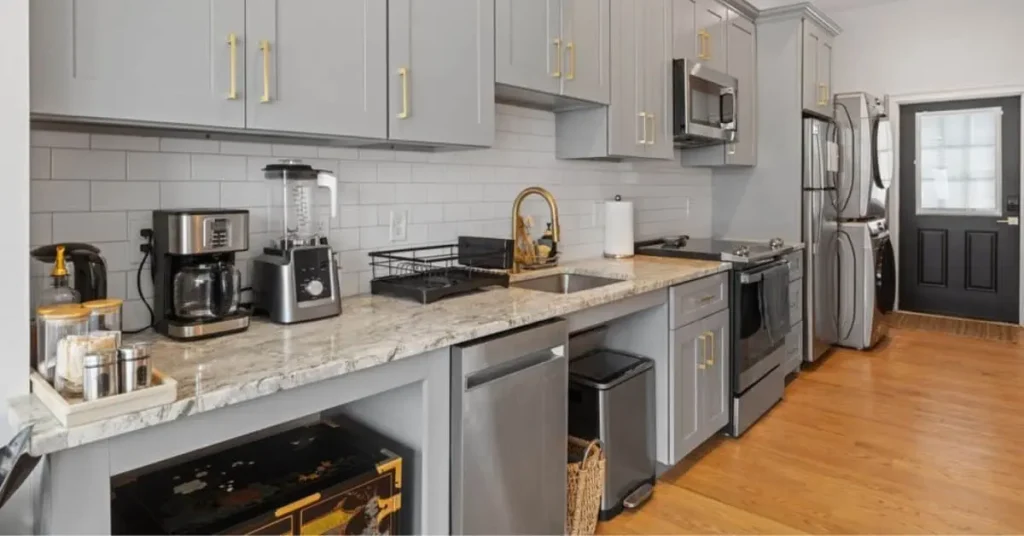
Overcrowding Your Storage Space
Stuffing all your appliances into a single cabinet may seem like a space-saving solution, but it often causes more harm than good. When appliances are crammed together, they’re more likely to get scratched, dented, or damaged. Plus, pulling one out often means knocking over several others.
How to fix it:
Be realistic about how much space you have. If cabinets are overflowing, consider decluttering or investing in better storage solutions, like pull-out shelves or vertical dividers. Store frequently used appliances in easy-to-reach places and place less-used items in higher cabinets or secondary storage areas.
Storing Appliances While They’re Still Dirty
It’s easy to put an appliance away without fully cleaning it, but this can lead to grease buildup, stains, and even mold. Food particles left inside blenders, toasters, or coffee makers can attract pests and cause unpleasant odors.
How to fix it:
Before storing an appliance, always give it a thorough cleaning. Wash any detachable parts, wipe down the exterior, and ensure everything is completely dry to prevent mold and mildew. For appliances with small crevices (like food processors or juicers), use a small brush to remove crumbs and residue.
Ignoring Proper Cord Management
Tangled cords create clutter and can lead to damage over time. Wrapping cords too tightly around appliances can strain the wiring, while leaving them loose can create a messy, hazardous situation.
How to fix it:
Use Velcro straps, twist ties, or cord organizers to keep cords neat without over-tightening. Store appliances in a way that keeps cords from getting tangled—either by tucking them into designated cord compartments or securing them with small clips.
Storing Appliances in Hard-to-Reach Places
If you have to climb on a chair or move several items just to reach your blender, you’re less likely to use it. Hard-to-reach storage makes everyday cooking inconvenient and leads to unnecessary frustration.
How to fix it:
Keep frequently used appliances in easy-to-access locations, such as pull-out drawers or designated countertop spaces. Reserve high cabinets or deep pantry shelves for rarely used items like holiday-specific appliances. If your kitchen has limited space, consider using rolling carts or hanging storage for better accessibility.
Not Labeling Storage Bins and Accessories
Many small kitchen appliances come with accessories—blades, attachments, filters, and more. Without proper organization, these accessories can easily get lost or mixed up with other kitchen items.
How to fix it:
Use labeled storage bins or zippered pouches to keep accessories together. Store them near the corresponding appliance so they’re always within reach. If you have multiple appliances with similar attachments (like stand mixer beaters and hand mixer beaters), label each container to avoid confusion.
FAQs on How to Store Small Kitchen Appliances
Storing small kitchen appliances properly can be tricky, especially if you’re short on space. Below are answers to some of the most common questions to help you keep your kitchen organized and your appliances in great condition.
What is the best way to store small kitchen appliances?
The best way to store small kitchen appliances is to group them by use and accessibility. Frequently used appliances should be kept on countertops or in easy-to-reach cabinets, while occasional-use appliances can go in deep cabinets or pantry shelves. Use pull-out drawers, labeled bins, and vertical storage to maximize space.
How do I prevent dust from collecting on stored appliances?
To keep dust off appliances, store them in closed cabinets, or pantry spaces, or use dust covers. For countertop appliances, wiping them down weekly with a microfiber cloth helps prevent buildup. If storing appliances in an open area, consider placing them in fabric storage bags or containers with lids.
Can I stack small kitchen appliances to save space?
Stacking appliances can save space, but it should be done carefully. Heavier items, like slow cookers or stand mixers, should always be placed on lower shelves. If stacking, use soft padding or liners between appliances to prevent scratches and ensure stability.
What’s the best way to store appliance cords?
To avoid tangled or damaged cords, loosely coil them and secure with Velcro ties or twist ties. Avoid wrapping cords too tightly around the appliance, as this can cause stress on the wires. If possible, store appliances with their cords tucked inside designated compartments or small cable organizers.
How can I organize appliance accessories and attachments?
Store accessories and attachments in labeled storage bins or zippered pouches. Keep them near the corresponding appliance to make them easy to find. Drawer dividers or small plastic containers can also help keep small parts, like blender blades and mixer attachments, neatly organized.
Where should I store rarely used kitchen appliances?
If you don’t use an appliance often, store it in a high cabinet, pantry shelf, or even a basement storage area. Seasonal appliances, like ice cream makers or holiday baking tools, can be placed in labeled storage bins and kept out of the way until needed.
What should I do with small appliances I no longer use?
If an appliance is in good condition but rarely used, consider donating or selling it. For broken appliances, check if they can be repaired or recycled. Keeping unused appliances only adds clutter and takes up valuable storage space.
Conclusion
Storing small kitchen appliances properly isn’t just about saving space—it’s about keeping your kitchen organized, making appliances easier to access, and extending their lifespan. Whether you have a few everyday essentials or a collection of specialty gadgets, a well-thought-out storage system will make your cooking routine smoother and more enjoyable.
Start by decluttering and only keeping the appliances you actually use. Clean and maintain them before storage to prevent dust, grease buildup, and damage. Use smart storage solutions like pull-out shelves, vertical dividers, and labeled bins to keep everything organized. And most importantly, store appliances in a way that makes sense for your kitchen layout and cooking habits.
By avoiding common mistakes—like overcrowding, tangled cords, and poor placement—you’ll create a functional and clutter-free kitchen. With the right approach, even a small kitchen can feel spacious and efficient.
Now it’s your turn! Take a look at your kitchen setup and see how you can optimize your small appliance storage. A few simple changes can make a big difference!

